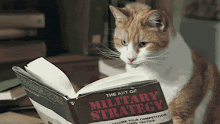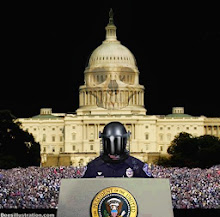“Is the universe eternal? Or not? Or both? Or neither? Is the universe finite? Or not? Or both? Or neither? Is the self identical with the body? Or is the self different from the body? Does the Tathagata* exist after death? Or not? Or both? Or neither?” ~ The Fourteen Unanswered Questions of Buddha
* Tathagata is the name Buddha used for himself, meaning “the one who has thus come and the one who has thus gone”.
The theories of special relativity and general relativity, as theorized by Albert Einstein, state in part that reality is four dimensional, made up of time, length, width and depth. Also he states there are four forms of fundamental force in the universe; weak nuclear force, strong nuclear force, electromagnetism and gravity. A fifth force is thought to exist and yet is undiscovered.
Four is representative of completion in numerous systems, from our physical composition to the laws of the four dimensional universe and its four forces. Without the balance of these four forces, life as we know it would not be possible. The matrix of four is physically and naturally exemplified in our inner microcosm and the celestial macrocosm, and is spiritually and mentally recognized by many people’s throughout history, across cultures and subjects.
The Imponderables
Our minds are wired to question, only frequently we ask limited questions. Curiosity is a quality shared by all people, only many people are trained not to be curious. We are capable of questioning everything in the four dimensions. Some questions are of physics and nature while others are about spiritual or mental applications. There are a few questions which all people have all posed since time immemorial. Some of the same questions have been asked, like those posed to and unanswered by Buddha, for millennia. They reveal our nature to question everything, even and perhaps especially the unanswerable.
Sometimes answers are found. Einstein found many answers to his questions about the universe. Normally when questions are answered though, new questions arise. Some questions however are not worth asking and not worth pursuing, like the fourteen unanswered questions of Buddha, also known as the imponderables. The Fourteen Questions are actually four questions, three with four aspects and one with two. Despite Buddha’s refusal to answer the questions, they were still posed in the most developed manner possible in hopes of getting an answer, in four ways to form completion.
Buddha believed people existed in either two states; in existence or non-existence. Many people visited him with questions and these were said to be the only questions he did not answer. It is believed he thought the imponderables could never truly be answered and that they led to states of negativity and non-existence, ultimately inconsequential to our earthly predicament of eliminating suffering and attaining enlightenment. Many questions are worth deliberation and elaboration because they are pertinent to our earthly predicament. But at least these four questions, the imponderables, are inconsequential.
Questions are posed completely in four ways, as illustrated in the formation of the imponderables. The formation of the questions are valuable on their own, and indicative of the matrix of four and the duality of polarity. Buddha is asked these four questions in the philosophical formation of the duality of polarity, with four important parts.
Is it so? Is it not so? Is it both? Is it neither?
The very inquiry into the origins of human thinking and being is posed through the duality of polarity, and yet it’s most often considered a singular polarity. Why are we the way we are? Is it the result of nature or nurture? The debate of nature versus nurture is posed in a single distinct polarization. Yet the best answer supersedes the singular polarity. Traditionally, it is philosophically viewed as a trinity of options, it being the synthesis of one and the other, of thesis and antithesis. And yet this is actually the matrix of four and the duality of polarity with the fourth part missing. It should be asked in the same philosophical formation as the imponderables, which despite Buddha’s refusal to answer, were still posed in the most developed manner possible, in hopes of an answer.
Is human thinking and being the result of nature? Or nurture? Or both? Or neither?
This idea may be explored in multiple ways and has roots among many disciplines. We question our thinking and seek evidence of an actual answer, however the pinnacle purpose of such debate is to understand the possibilities, the in-betweens, through the duality of polarity. Whenever the either/or option is put forth, options are limited, for there are always four possible answers; one, the other, both and neither. In the case of ‘nature versus nurture’, the most sensible answer is both nature and nurture makes us who we are. But perhaps it is neither, perhaps other systems rather than biological or experiential are at play, like astrological systems for instance.
Does art reflect life or does life reflect art?
This similarly philosophical question is aimed at its own answers, but yet is primarily based on understanding possibilities via the duality of polarity. There are four basic forms of answers to this question and those like it, and yet in typical form, only two or three aspects are normally explored; ‘one, the other or the combination of both’, philosophically known as thesis, antithesis, and synthesis. There are the obvious two answers posed, one contrasting the other and a mixture is the third choice. The distinct fourth option, which is seemingly always left out – possibly because of its ability to shake the status quo – is the unlimited alternative, the nullisis.
Does art reflect life or does life reflect art? Or both? Or neither?
The Nullisis
In the philosophical set of thesis, antithesis and synthesis, the ‘neither’ option is missing, the distinct possibility, the unlimited alternative. The nullisis answer is outside the box, or outside the cave, of our thinking.
Nullisis can be compared to and understood through the four human blood types. In every dialectical discussion there is thesis, antithesis, synthesis and nullisis or A, B, AB, and O.
Nullisis, ‘neither’, the unlimited alternative is complicated for it opens every dialectic to any alternative. Consideration of alternatives is typically limited to ‘one, the other and the combination’, because the next option, ‘neither’, opens up the door to anything else. And entities seeking to control societies, during every time period everywhere, prefer to eliminate the fourth option; it represents the unlimited alternative, while the either/or situation usually results in controllable back and forth combinations.
The origin of the celebrated triad of thesis, antithesis, synthesis, is often attributed to Georg Wilhelm Hegel, however he criticized what is now often called Hegelian Dialectic. Johann Gottlieb Fichte actually formed the original presentation. Hegel is known to have called the triad of thesis, antithesis and synthesis ‘boring’ and a ‘lifeless schema.’ Without nullisis, ‘neither’, the unlimited alternative, the commonly referenced philosophical triad is a lifeless schema, for if one combines a wrong answer with the right answer, a half correct solution might result.
Hegel did use and note a similar extrapolation of three; immediate, mediated and concrete. Critics note this trinity to be limited by way of assumptions and errors, and in what is assumed to be concrete. Without nullisis or new information, one could possibly begin with information which is then countered by disinformation and ends up misinformation. Nullisis is needed. Nullisis is the distinct and developed fourth philosophical part which today often goes unconsidered.
The Mathematics of the Nullisis
If mathematics can be considered beautiful, nullisis can be beautifully illustrated through the most mysterious and elusive of all arithmetic equations, an imponderable of sorts. It is represented in one of the most mysterious equations of the most complicated of all numbers; zero. In fact there is no zero. Zero can never be physically represented and in the entire universe there is not one. Even in nothingness there is something. And through its cancellation is its verification; there are in fact zerozeros. Zero represents uncertainty, uncertainty similar to that of the unlimited alternative.
Mathematics seeks clear answers, and there are clear answers in practically all arithmetic. But there is only one arithmetic equation that represents uncertainty and unlimited possibility, the nullisis.
0 + 0 = 0
0 – 0 = 0
0 x 0 = 0
But the answer to 0 divided by 0 is unlimited possibility, an undefined unknown.
0 à· 0 = ?
The answer to zero divided by zero is reflective of the nullisis. It is the only simple arithmetic equation to which the answer is unknown. A valid answer to this equation could be anything from zero to infinity, just like the nullisis, the unlimited alternative.
It is notable that in arithmetic, division is the distinct operation. It represents sharing for one, and not necessarily what has come to be known as divisiveness.
Applying the Matrix of Four
The most sensible answers to both the debate of ‘nature versus nurture’ and the question of ‘art reflecting life or life reflecting art’ is synthesis, or ‘both’. It is a combination of nature and nurture that makes us who we are. It is a balance of influences in art and life which influence one another. Art contains a spark of life, while life is artful. Nature and nurture, art and life, are inseparable; like a swirling Yin Yang, contrasting syntheses. Both contain interrelated and interdependent contrasts.
Synthesis is the answer to these two questions, and to many questions. But sometimes the answer to questions and dialectics are in the nullisis. Otherwise systems would be lifeless schemas, without alternative, development or invention.
Socially and politically speaking, when an either/or question is presented, one must always take into account the four possibilities of thesis, antithesis, synthesis and nullisis. Question the validity of the thesis. Question what is being heralded as an antithesis and if it is truly anti at all. Equally question how the thesis and antithesis are being presented as synthesized, for frequently the synthesis is not a true mix but a mere adjustment, a euphemism or exaggeration aimed at steering perspective. And especially question the aspect of nullisis, for it not only means ‘neither’, it is the unlimited alternative.
The dialectic of large scale energy sources is currently typically limited to either the burning of fossil fuels or the ignition of nuclear fuels and both. Examples within the nullisis in this dialectic is solar power or wind and water power generation, harnessing geothermal energy (Japan is one of the most active geothermal places on the planet and now the most ruined from nuclear experimentation) ocean current/tidal energy. The alternatives are unlimited, however petrol and nuclear maintain thee societal status quo. There is always more than one, its counter and the combination of the two; there is always nullisis, the unlimited alternative. Nullisis is the enigma wrapped in the riddle of the matrix of four and the philosophy of the duality of polarity.
Embrace the consideration of nullisis. Apply the matrix of four. The examination of situations through the contemplation of thesis, antithesis, synthesis and nullisis will open minds around you, and your own.
About the Author
Activist, author and Tai Chi teacher, Ethan Indigo Smith was born on a farm in Maine and lived in Manhattan for a number of years before migrating west to Mendocino, California. Guided by a keen sense of integrity and humanity, Ethan’s work is both deeply connected and extremely insightful, blending philosophy, politics, activism, spirituality, meditation and a unique sense of humour.
Ethan’s publications include:

















No comments:
Post a Comment